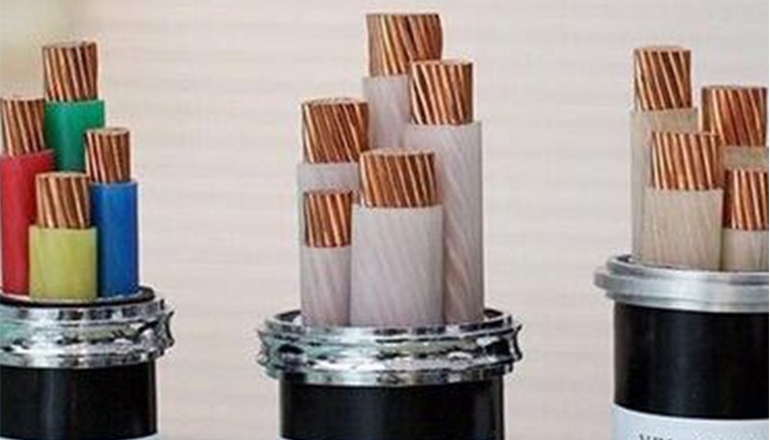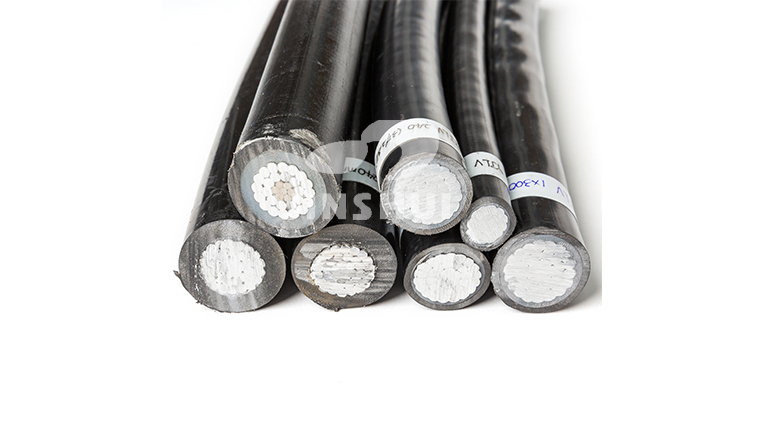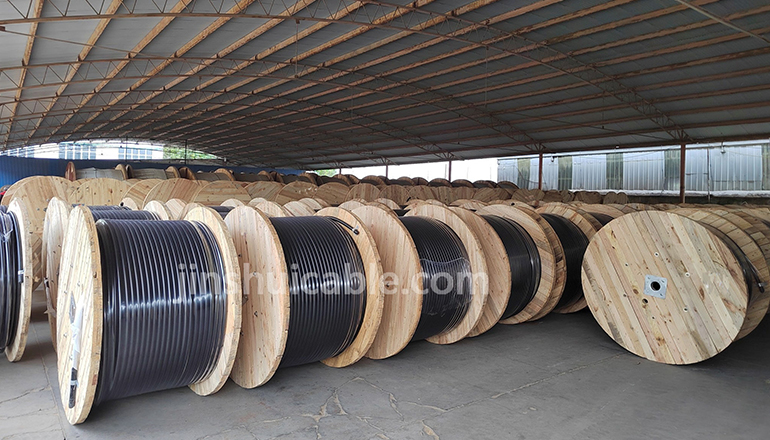- Offices Time:24 Hours Online
- Email:[email protected]
- WhatsApp:+8618339938759
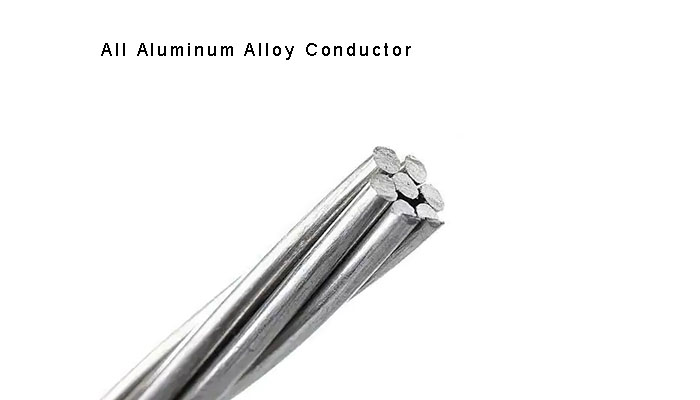
Posted on February 20, 2023
Application Of All Aluminum Alloy Conductor
All Aluminum Alloy Conductor (AAAC) is an electrical conductor made up of aluminum alloy wires. The alloying elements are added to improve the conductor’s mechanical and electrical properties, such as its strength, flexibility, and resistance to corrosion. Its commonly used in power transmission and distribution systems, where they provide a lightweight, high-strength, and corrosion-resistant option for overhead lines. Compared to traditional steel conductors, Its have a higher conductivity-to-weight ratio, which means they can carry more current with less weight.Which allows for a higher strength-to-weight ratio compared to traditional aluminum conductors.So it can carry more current over longer spans without sagging.
AAAC conductors are available in a variety of sizes and configurations to meet different electrical requirements. They are also designed to withstand extreme weather conditions, such as high winds and heavy ice loads, without breaking or sagging.
The structure of all aluminum alloy conductor
All aluminum alloy conductors are used in electrical power transmission and distribution systems. The structure of an aluminum alloy conductor depends on the type of alloy used, as different alloys have different properties and characteristics. However, most aluminum alloy conductors have a similar basic structure.
The basic structure of an all aluminum alloy conductor consists of a central core made of aluminum or aluminum alloy, which is surrounded by one or more layers of aluminum alloy strands. The strands are typically made up of several individual wires that are twisted together to form a single strand.

The individual wires that make up the strands are usually made of high-purity aluminum, with a small percentage of other elements added to increase strength, conductivity, or other desired properties. The most common alloying elements used in aluminum alloys for conductors include copper, magnesium, silicon, and zinc.
The number of strands and the diameter of the individual wires used in the strands can vary depending on the specific application and the requirements for the conductor. The final structure of the conductor may also include a protective coating or covering to prevent corrosion, abrasion, or other types of damage.
All aluminum alloy conductor application range
All aluminum alloy conductors are commonly used in a wide range of applications, including:
1.Overhead power transmission lines
All Aluminum alloy conductors are used for transmitting electrical power over long distances. They offer high tensile strength and low weight, which makes them ideal for use in overhead transmission lines.
2.High-voltage power cables
All Aluminum alloy conductors can also be used to make high-voltage power cables. They are ideal for this application because they have good electrical conductivity and low resistance, which helps to minimize power losses.
3.Submarine power cables
All Aluminum alloy conductors are also used in submarine power cables. They are resistant to corrosion and have a high degree of tensile strength, which makes them ideal for use in harsh underwater environments.
4.Building wiring
All Aluminum alloy conductors are sometimes used in building wiring. They are cheaper than copper conductors and offer good electrical conductivity, making them a cost-effective alternative to copper.
5.Industrial applications
Aluminum alloy conductors are also used in various industrial applications, such as in motors, generators, and transformers. They offer high electrical conductivity and low weight, which makes them ideal for use in these applications.
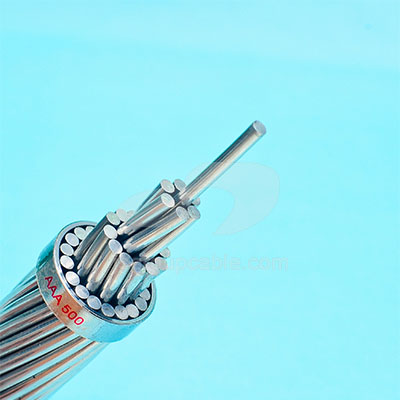
6.Solar power applications
Aluminum alloy conductors are also used in solar power applications, particularly in the construction of photovoltaic panels. They have a high degree of thermal conductivity, which allows them to dissipate heat quickly and efficiently. They are also lightweight and easy to work with, which makes them ideal for use in solar panels.
7.Automotive and aerospace applications
Aluminum alloy conductors are also used in the automotive and aerospace industries. They are lightweight and have good electrical conductivity, which makes them ideal for use in these applications. They are used in wiring and other electrical components in vehicles and aircraft.
8.Railway and transit systems
Aluminum alloy conductors are used in railway and transit systems for power transmission and signaling. They are lightweight, durable and can withstand harsh weather conditions.
9.Communication and telecommunications
Aluminum alloy conductors are used in the construction of communication and telecommunications cables. They offer good electrical conductivity and low resistance, which helps to minimize signal loss.
In summary, aluminum alloy conductors have a wide range of applications in various industries, thanks to their high tensile strength, electrical conductivity, lightweight and durability. They are a cost-effective alternative to copper, and Their versatility makes them ideal materials for a variety of applications.
Features of all aluminum alloy conductors
All Aluminum Alloy Conductor (AAAC) are made up of high-strength aluminum-magnesium-silicon alloy wires. These conductors have several features, including:
1.Lightweight
All Aluminum Alloy Conductor are lightweight compared to other conductors like steel or copper, making them easier to install and transport.
2.High strength
Have high strength and excellent corrosion resistance.
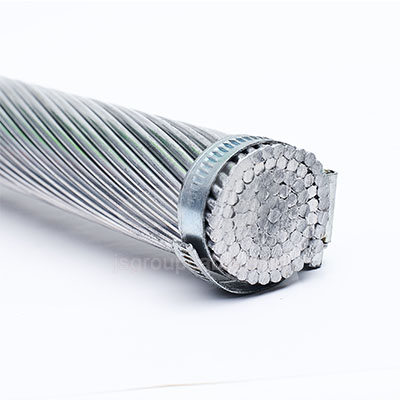
3.Excellent conductivity
Have excellent electrical conductivity, which makes them ideal for use in power transmission and distribution.
4.Low sag
The high strength of the All Aluminum Alloy Conductor enables them to resist sagging even when operating under high temperatures and heavy loads.
5.Good weather resistance
Have good weather resistance and can operate under extreme temperatures and harsh weather conditions.
6.Good corrosion resistance
The aluminum-magnesium-silicon alloy used in the construction of All Aluminum Alloy Conductor provides excellent corrosion resistance, making them ideal for use in coastal and industrial areas.
7.Easy to install
The lightweight and flexible nature makes them easy to install and terminate, reducing installation time and costs.
8.Long life
Have a long service life and require minimal maintenance, making them a cost-effective choice for power transmission and distribution systems.
Overall, AAAC conductors offer a number of advantages over traditional steel or aluminum conductors, making them a popular choice for electrical applications that require high strength, durability, and conductivity.
Post categories
Most Popular Posts
-
The 135th China Canton Fair
March 20, 2024 -
What are the laying methods of copper core wires and cables?
January 9, 2024 -
What are the advantages of aluminum conductor cables?
December 14, 2023 -
Characteristics of high temperature wires and cables
December 7, 2023



